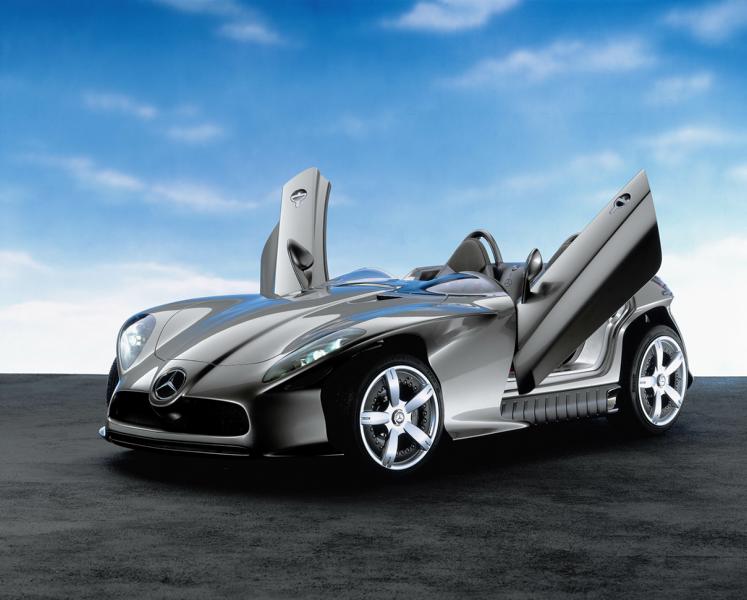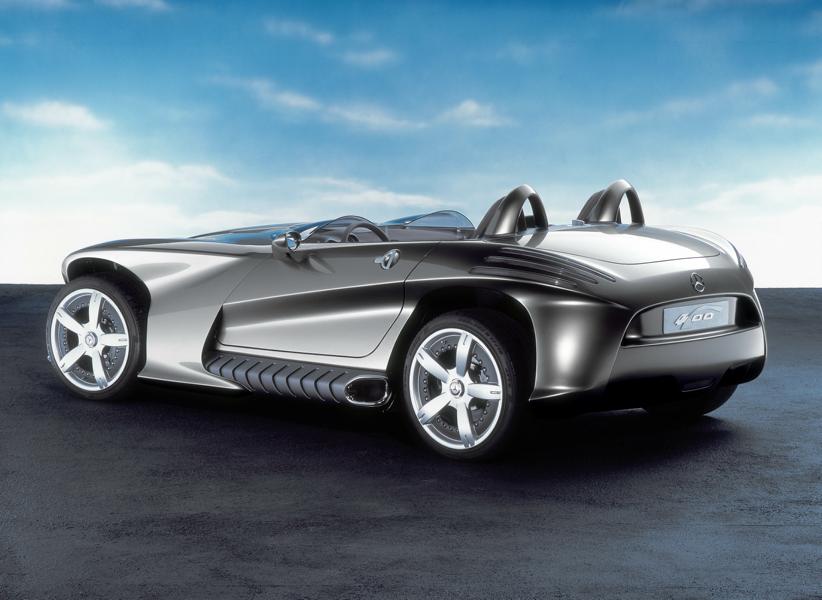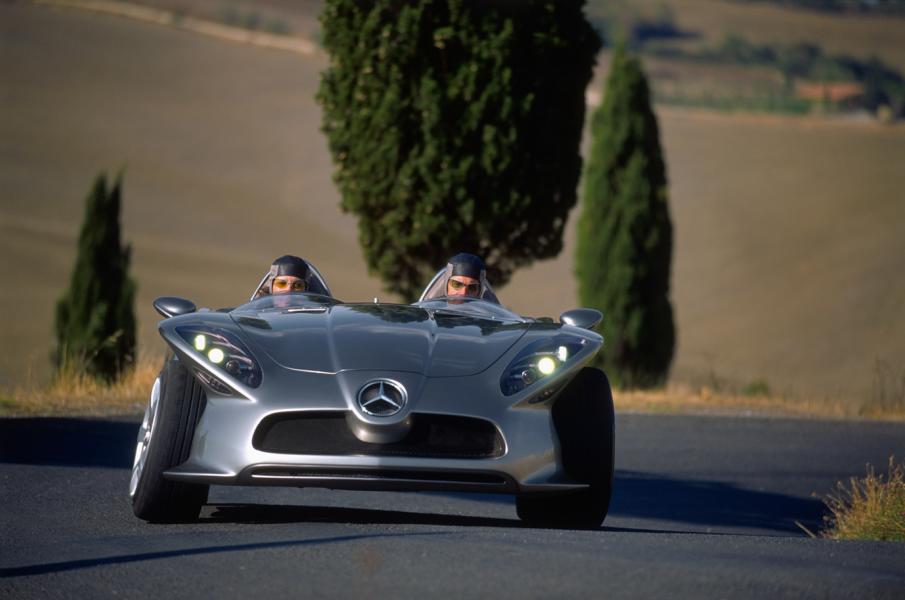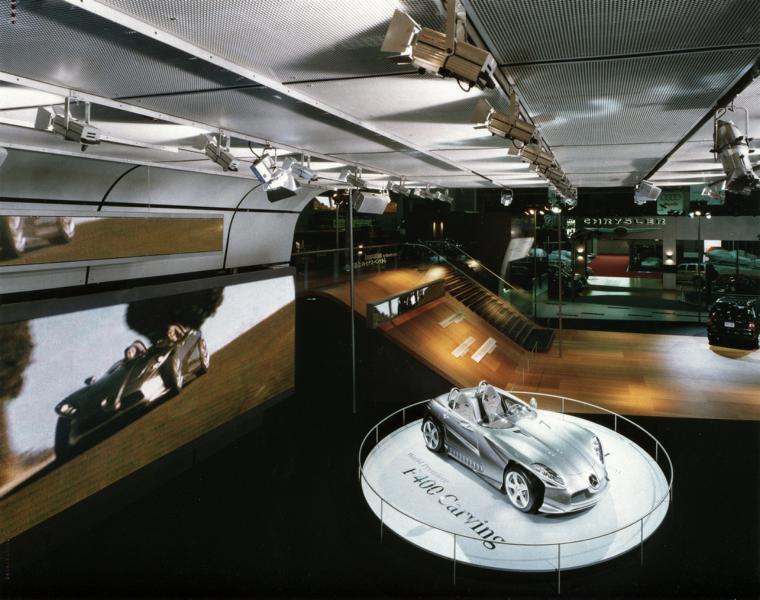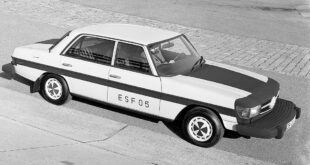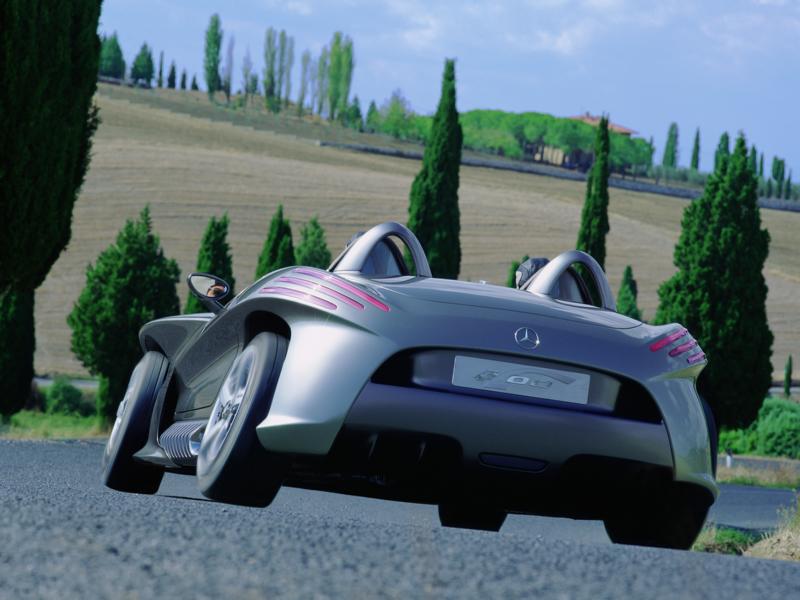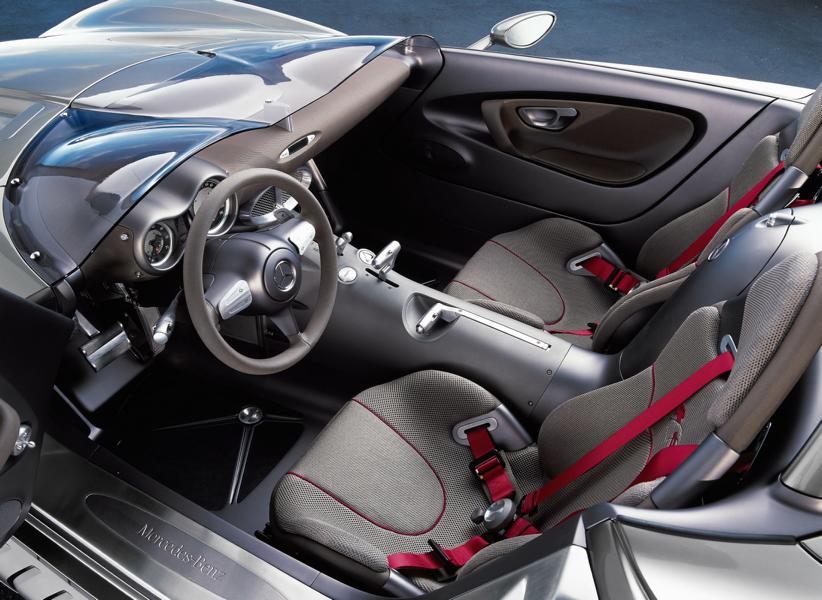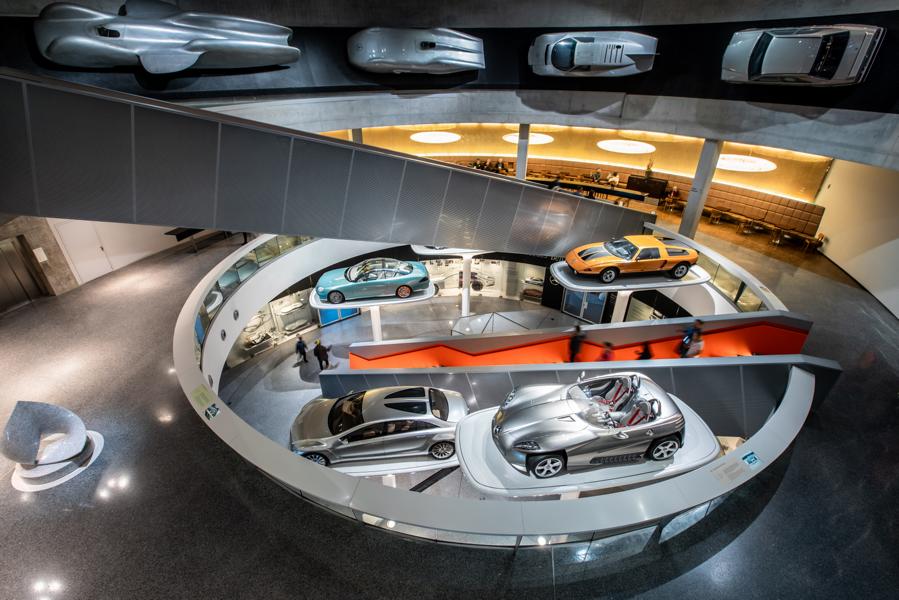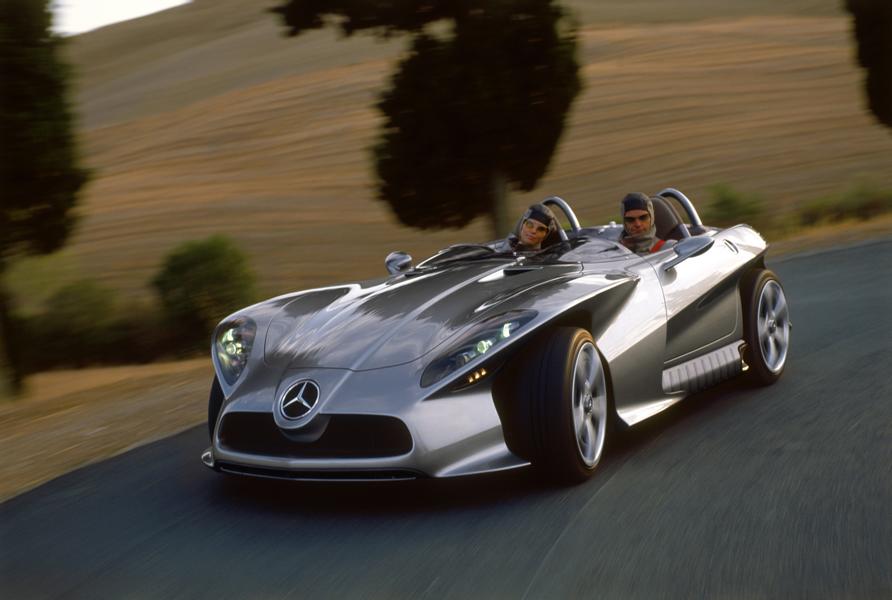As a constant innovator in automotive technology, Mercedes-Benz sometimes goes unconventional. One example of this is the F 400 Carving research vehicle that the brand presented at the Tokyo Motor Show (October 2001 to November 20, 14) in October 7, 2001 years ago. It shows many pioneering systems, among which the active camber adjustment of the wheels is the main attraction: The vehicle appears to lean into the curve - similar to winter sports enthusiasts on carving skis. Today the F 400 Carving can be seen in the Mercedes-Benz Museum in the “Fascination of Technology” section. This can be accessed free of charge via the atrium.
Research vehicle F 400 Carving
- The active camber adjustment and asymmetrical tires enable a plus in safety and driving dynamics
- "Drive by wire" for steering and braking
- Xenon headlights, LED indicators and the use of new materials
The new system increases the camber angle of the wheels on the outside of the bend to up to 20 degrees, depending on the driving situation. In combination with newly developed tires, cornering forces that are 30 percent greater can be transmitted than with a chassis with a fixed camber setting and standard tires. This means a considerable plus in active safety, because the greater the cornering forces of the tires, the better the road contact and cornering stability. Thanks to active camber adjustment, the research vehicle achieves a maximum lateral acceleration of 1,28 g and thus exceeds the values of sports cars of the time by around 28 percent.
The new types of tires have an asymmetrical tread. If the wheels on the outside of the curve lean to one side, the two-seater drives on the inner tire treads, which are slightly rounded and whose profile and rubber compound are specially designed for high cornering dynamics and safety. When driving straight ahead, however, the outer tire areas are in contact with the road. They have a proven car profile with good speed and noise properties. Thanks to the active camber adjustment, two different concepts can be implemented in one tire.
F 400 carving with active camber adjustment
With the F 400 Carving, the engineers also gain experience in the use of new types of chassis technology in active safety. Because in addition to the higher driving stability in curves, the active camber adjustment also offers a significant plus in driving safety in emergency situations. If, for example, the camber is increased in a targeted manner when there is a risk of skidding, the higher cornering forces can take advantage of the electronic stability program ESP® sustainably support. The F 400 Carving shows how it is done: in the event of an emergency stop, all four wheels of the research car can be toppled in a flash, reducing the braking distance by a good five meters at 100 km / h.
Of course, that wasn't the end of it. Our tuning magazine has tens of thousands of other tuning reports in stock. Do you want to see them all? Just click HERE and look around. Or are you especially interested in our Tuning classics category? Then the following extract of tuned young and old timers is sure to be just the thing to browse.
Research vehicle Mercedes-Benz F 400 Carving!
Photo credit: Mercedes-Benz
tuningblog.eu - on the subject of cars, motorcycles, bikes / ATV / scooters & Co., and of course our passion, the Tuning, we keep you up to date and report daily on cool vehicles from all over the world. It's best to subscribe to ours Feed and you will be automatically informed as soon as there is a new post.
 tuningblog.eu Your magazine about tuning the car
tuningblog.eu Your magazine about tuning the car
